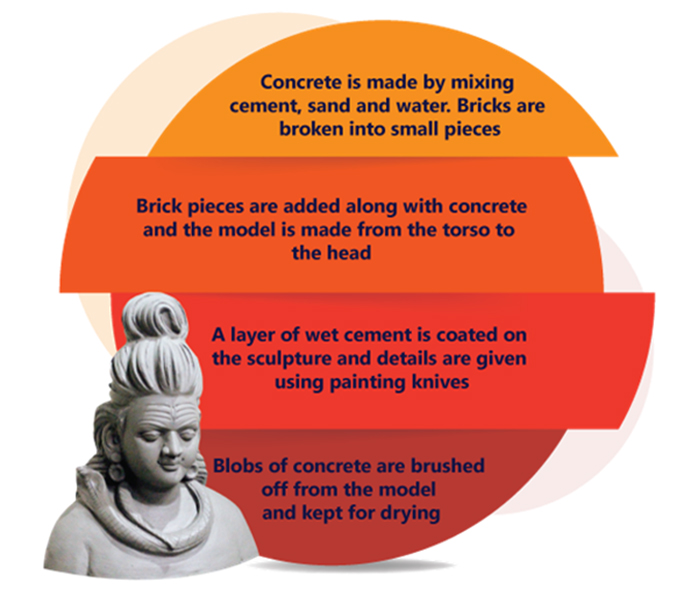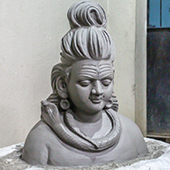Design Resource
Traditional Cement Sculpting - Madurai, Tamilnadu
Beautifully Sculpted Idols
by
Prof. Bibhudutta Baraland Guna D.
Making of cement sculpture requires strong and powerful skills as well as experience in shaping an object into a sculpture. Artisan uses a rotating stool on which the sculpture is made. Rotating stool helps the artisan to sculpt the figure in all angles by rotating it at will in his convenience. The process starts by making of concrete. Artisan mixes cement, water and sand using garden trowel in a container. The consistency of mixing water with cement is controlled by the artisan. Bricks are broken into small pieces using a trowel. These bricks are going to be the armature for the sculpture.
Concrete is laid down on the stool. Brick pieces along with concrete is positioned according to the size of the sculpture. The torso of the sculpture is done first. Concrete is laid around the brick pieces and the bricks are not slightly visible. Smaller pieces are placed over the torso and concrete is placed alongside to make the article sturdy; this being the neck region of the model. Artisan lays a single vertical brick piece for the face of the sculpture. It is strengthened around with concrete. Small-scaled pieces are arranged with concrete between two pieces; above the face region as a high bun of the sculpture as the artisan is making the idol of Lord Shiva. Concrete is placed on the rear of the model from the top to the torso which represents hair of Lord Shiva.
Cement powder is deposited on the hair, face and torso region to give toughness to the sculpture. Using painting knife, extra concrete is etched out and given detailing for the base of the model. The artisan next coats the sculpture with a slightly more liquefied concrete layer all over. Painting knives of different sizes are used according to the shape of the region. As the concrete is wet, it becomes more versatile for the artisan to give definite detailing to the facial features, ears, hair etc. Specific minute characteristics are given using a thinner painting knife. Extra blobs of concrete are brushed off using a painting brush at this stage, as once when the concrete solidifies it is non-viable to changes.
Post sculpting, water should be poured on the idol two times a day for 3 days for curing purpose. Painting process can be started only after 15 to 13 days after the sculpture is made. Primer is applied as a base coat for all the cement sculptures after which enamels can be used. Copper is used as the armature for idols above 2 feet in height, as the copper has resistance from rain, thunder and lightning.
Flow Chart:























